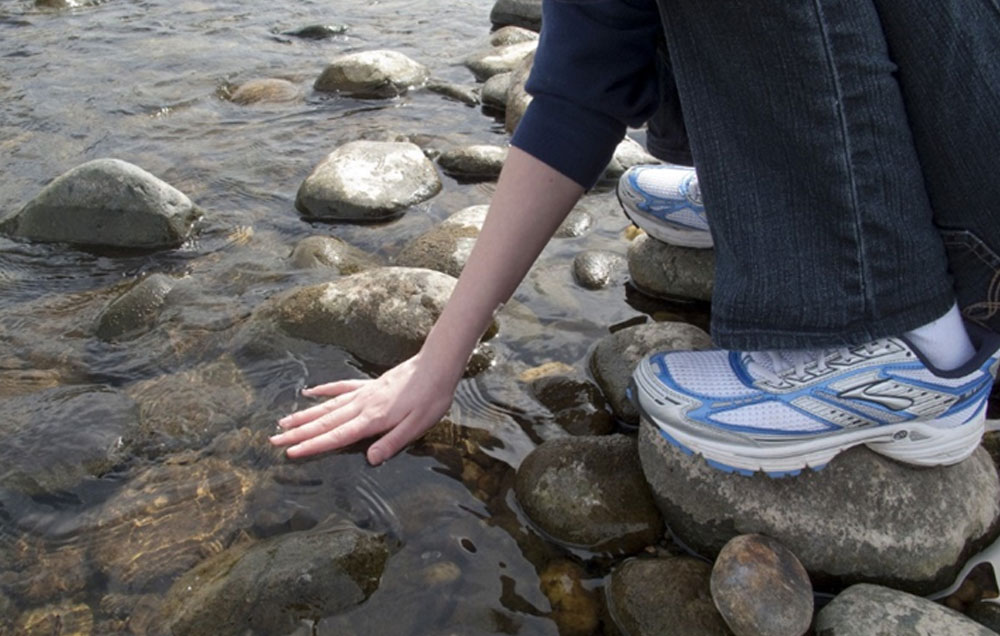Grounding Techniques
What Are They and How Do Grounding Techniques Work?
Grounding techniques use tools such as visualization and senses including sight, hearing, and smell to help distract us from uncomfortable thoughts and feelings.
There are two types of Grounding Techniques, Mental and Physical. Mental Grounding Techniques focus on the mind and doing things that help to refocus and redirect our brains to a better mental state. Physical Grounding Techniques focus on our five senses and finding ways to engage our touch, sight, smell, hearing and taste to bring our bodies and mind back into a more relaxed and untroubled state.
During a panic attack or trauma-related flashback, your emotions can take over your thoughts and physical responses. When you focus on the present using grounding techniques, you can help stop the negative physical response and return your mind and your emotions to a place of safety.
Mental Grounding Techniques
These grounding exercises use mental distractions to help redirect your thoughts away from difficult feelings and bring you back to the present.
Play a Memory Game
Look at a detailed photograph or picture for 5 to 10 seconds. Then, turn the photograph face-down and try to remember the photograph in your mind, in as much detail as possible. Or, you can mentally list all the things you remember seeing from the picture.


Make Lists From Different Categories
Choose one or two topics, such as “country songs,” “ice cream flavours,” or “board games.” Take a minute or so to list as many things from each topic as you can in your mind.
Use Math to Ground Yourself
Even if you aren’t a math person, numbers may help ground you.
Try these exercises:
- running through a times table in your head.
- counting backward from 100
- choose a number and thinking of five ways you could make the number
(6 + 11 = 17, 20 – 3 = 17, 8 × 2 + 1 = 17, etc.)


Use an Anchoring Phrase
This might be something like, “I am (your full name), I am ___ years old. I live in (insert your community). Today is Friday, August 11, 2022. It’s 10:04 am in the morning, and I am going to make a cup of tea.” You can create the anchoring phrase however you want it to be.
Imagine Yourself Leaving the Painful Feelings Behind
Visualize yourself:
- Gathering up any negative emotions, ball them up, and putting them into a box
- Walking, swimming, biking, or jogging away from painful feelings
- Treating your thoughts like song you don’t like on the radio, changing the station or turning down the volume — they are still there, but you don’t have to listen to them.


Recite Something
Think of a poem, song, or prayer you know by heart. Recite it quietly to yourself or in your head.
Describe What You See Around You
Spend a few minutes taking in your surroundings and noting what you see. Use all five senses to provide as much detail as possible.
For example:
“There is a bench in the middle of the forest with big trees. I feel the warmth of the sun on my shoulders, the air smells fresh and the ground feels soft under my feet. I hear kids laughing and dogs barking.”

Physical Grounding Excercises
Here are some physical grounding exercises to help you feel grounded when you are going through a difficult time or feeling distressed.
Water Exercise
Try placing your hands in water
Focus on the feel and the temperature of the water. How does it feel on your fingertips? On you palms? How does it feel on the backs of your hand?
Next, place your hand in warm water and then try cold water. Then place your hand in cold water first and then warm water. Does it feel different when you switch from “cold to warm” as opposed to “warm to cold water?”


Random Objects
Pick up 4 random objects from your surrounding area.
Are these objects:
- Soft or hard?
- Heavy or light?
- Warm or cool?
- What is the texture like?
- What colour is each object?
Take Deep Breaths
Slowly inhale, and then exhale. If you like, you can say aloud or think to yourself ‘breathe in” and “breathe out.” Concentrate on the feeling of your lungs filling with air when you inhale and the release of air once you exhale.


Go Outside for a Short Walk
Concentrate on your steps as you walk. You can even count them if you like. Focus on the rhythm as you please one foot forward in front of the other. Even a short walk can help you refocus and stay grounded.
Listen to Your Surroundings
Take a few moments to listen to the sounds around you. Can you hear birds chirping? Dogs barking? Children playing or people laughing?
Let the sounds wash over you and remind you where you are.


